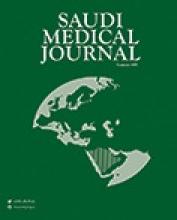Abstract
OBJECTIVE: The elderly population continues to increase in most countries and inadequate nutrition is a common problem affecting their functional and physical status. Therefore, we should periodically assess the nutritional status of the elderly using practical methods. Our study objectives are to assess the nutritional status of the elderly using 2 different methods: Mini Nutritional Assessment (MNA) and Nutritional Screening Initiative Checklist (NSIC), and to evaluate the consistency of the methods.
METHODS: We carried out a cross-sectional study between February 2003 and March 2004. We included a total of 1,564 elderly volunteers living in Ankara, Turkey, with median (± inter quartile range [IQR]) age of 70 ± 8 (Male: 71 ± 9; Female: 70 ± 9 ) years. We utilized 2 frequently used instruments; MNA and NSIC in this study.
RESULTS: The MNA results (<17 points) indicated that 6.5% of the male and 8.8% of the female participants had inadequate nutrition. According to NSIC, 34.3% of males and 36.9% of females were classified as having a high risk of nutritional deficiency. We observed a decrease in MNA and an increase in NSIC scores with the increase of age (p<0.01). We determined a negative correlation of MNA and positive correlation of NSIC with body weight, body mass index (BMI), mid-upper arm circumference (MUAC), and calf circumference (CC) (p<0.01). We did not find correlations between MNA and NSIC score to be statistically significant (r:-0.318; p>0.05). We analyzed agreements between MNA and NSIC score by Kappa statistical method (kappa: 0.13, p: 0.285) and determined that neither of these 2 methods can be used in lieu of the other.
CONCLUSION: For the assessment of the nutritional status of the elderly, we could use both MNA and NSIC instruments but depending on the facilities and preferences, we cannot use one to replace the other. The MNA includes both anthropometric measurements and various nutritional parameters, and is a practical and most valid method.
- Copyright: © Saudi Medical Journal
This is an open-access article distributed under the terms of the Creative Commons Attribution-Noncommercial-Share Alike 3.0 Unported, which permits unrestricted use, distribution, and reproduction in any medium, provided the original work is properly cited.






